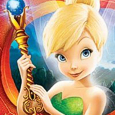 Animators are frequently nicknamed “actors with a pencil”. And there’s no doubt about that when you see Ollie Johnston playing Baloo or Norm Fergusson playing Pluto in his mirror. But then you consider some the main principles of animation like “beat and rhythm”, “timing” or “slow-in and slow-out” and you realize that you are not so far from music either.
Animators are frequently nicknamed “actors with a pencil”. And there’s no doubt about that when you see Ollie Johnston playing Baloo or Norm Fergusson playing Pluto in his mirror. But then you consider some the main principles of animation like “beat and rhythm”, “timing” or “slow-in and slow-out” and you realize that you are not so far from music either.
All the way through animation history, there were a great deal of animators and animation artists who had a strong affinity with music, beginning with Walt Disney himself, and animation provided some of the greatest scores ever written as well as music inspired some of the greatest animation.
You can count Tony Bancroft as one of these special artists for whom music is more of an essential inspiration than a mere accompaniment. Very often, we are told about artists’ influences, and all the more when it’s about a director who has to give shape stylistically to his vision to his movie. But rarely are they invited to speak about their musical influences and how music drives them in their creative process.
So, here we go then, on a ride through Tony’s impressive journey in the realm of animation, from his debut at Disney on The Rescuers Down Under to his managing his own animation company, Toonacious, without forgetting his co-directing Mulan, that has just been released as a 3-disc collector’s edition DVD, featuring the current 2-disc Special Edition along with Mulan II all bundled into one enchanting package! Indeed, Mulan received four award nominations (one Academy Award, 2 Golden Globes and one Grammy) – all of them musical accolades!
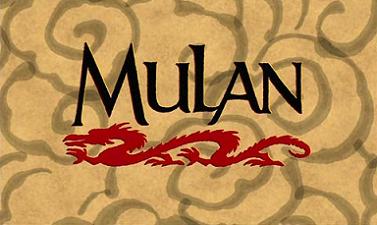
Animated Views: As a Cal Arts alumnus, who were your masters?
Tony Baxter: I was there in 1988-89. I had some of the best teachers a person in animation could have. Most of our teachers there usually worked at Disney or somewhere in the industry during the day and then they went to Cal Arts and taught us. So, I had Disney animators and artists to teach me how to do animation. One of my famous teachers was Joe Ranft. He was my story teacher for my freshman year. He was great. I learned a lot from him about story, how to compose a story and draw storyboards. And then, my animation teacher was Chris Buck who directed Tarzan, a great animation teacher, and then Michael Giamo, who is a great designer who worked for Disney and other companies for many years. He was the art director on Pocahontas.
AV: Who would be your favorite animator ever?
TB: I think, probably, Frank Thomas. I think Frank Thomas was a great animator that was more about performance. He understood how to create a character and bring it to life and he spent a lot of time doing time. Ollie Johnston was a great animator, too, but he was actually a very fast animator. Frank was a little slower, but I think his characters and his performance really resonate to audiences even more so than Ollie’s work. So, I’ve always emulated Frank Thomas. He couldn’t draw quite as well – although he could draw very well! – but he wasn’t known the best draftsman out of all the Nine Old Men, but he was a great performer. He could bring a character to like very well.
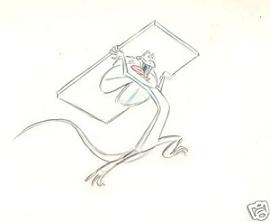
AV: Can you tell me about your debut in animation?
TB: The first animation I did was on Rescuers Down Under. I was kind of a junior animator, in training. So, the first scene that I did was Frank the lizard. I really enjoyed that. I had a good time working on that project. Then, I actually got promoted to animator while working on Beauty and the Beast. That was my first time of actually becoming an animator and I worked on Cogsworth. When you’re starting out as an animator, you have kind of a mentor animator that you learn under, and my mentor was Will Finn. He was a great animator. He did most of comedy characters, funny characters and so, I learned mostly about how to do funny characters, which was fun!

AV: What Cogsworth scenes did you animate?
TB: I animated Cogsworth when you first meet the Beast in the movie. He’s scaring Maurice, the father. Cogsworth is also scared of the Beast and he’s underneath a carpet or a rug and he’s kind of holding the rug over himself and he’s basically trying to calm the Beast down. I did a lot of scenes sporadically throughout the movie. I didn’t get a lot of sequences at that time because I was a new animator. New animators tend to get kind of whatever is left over! We don’t get the best scenes. But my mentor was very good and very generous as a supervising animator. So, he gave me some pretty good scenes. At the end of the movie, I did a couple of scenes of Cogsworth when he put the big, funny hat on and when, to help his partner Lumiere, he slides down the banister and pokes some scissors. So, I did some scenes of Cogsworth saving the day there, and then Lumiere kisses him.
AV: Were you involved in the Be Our Guest sequence?
TB: I was, but I didn’t animate any of the Cogsworths in Be Our Guest. That was all Will Finn for the most part. I did some of the bier steins dancing in the background and some salt and pepper shakers. That was the kind of stuff that I did because I was just starting.
AV: You also followed your mentor on Aladdin.
TB: Right. On Aladdin, I did Iago, again with Will Finn. I got a lot of better scenes on Iago, where I got whole sequences with the bird, and that was a lot of fun.
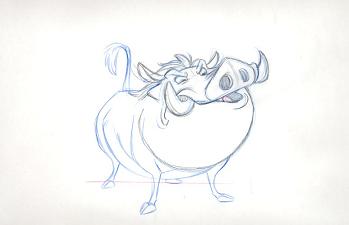
AV: Then, you got supervising animator of Pumbaa on Lion King!
TB: This was around the time when the Studio was trying to produce one movie a year. They have a very ambitious schedule. So, it meant splitting up into two different units, two different animation teams. So, all the guys like Glen Keane, John Pomeroy who was back at Disney at that time, Duncan Majoribanks and all these main guys decided that Pocahontas looked like a better film. So, they all went on to Pocahontas to supervise characters. Lion King was starting around the same time and it was almost a whole new crew. Andreas Deja was one of the only main animators that had an experience that stayed on Lion King because he just liked the animals better. So, it gave a great opportunity for myself and Mike Surrey, who was my partner as he animated Timon, to kind of rise up in supervising a character. I was very thankful that we were working at the Studio at that time. Up until that point, it was hard to kind of move up, because there was already Glen Keane and Andreas and stuff that were all supervising, and you had to wait until they retired before you could move up! But when they started making two movies at once, they needed a whole new crew of supervising animators which gave me a high grade opportunity at that time.
AV: One of my favorite sequences in Lion King is Can You Feel the Love Tonight. Can you tell me about the making of it?
TB: My first memory of that sequence was that Elton John and Tim Rice had created this really pretty song. It was a lot longer at that time but the movie needed some comedy and they wanted to put Pumbaa and Timon in there also. The directors decided that maybe it would be funny for Pumbaa and Timon to kind of mock the pretty love song and sing the last part of it as they were watching Simba and Nala fall in love. Pumbaa is a very soft-hearted, romantic character and starts crying! And they’re pretty upset because they don’t want to see their buddy Simba fall in love and leave them. Timon, especially, is pretty upset about it when he sings it. So, when they first made a version of that, storyboarded it, and the directors did the voice in the song, a kind of a scratch singing for Pumbaa and Timon singing, they showed it to Elton John and he hated it. He thought it was the worst idea ever. At time, he was threatening to quit, but the directors and the producers and Disney talked to him and calmed him down. Finally, he saw it had some value. It was for fun, it was for comedy. So, he did get on board and he rewrote the song so that Pumbaa and Timon could have a part. To me, that’s really what made it. It didn’t stop the film for a romantic love song. They used the romantic love song to continue the story with Pumbaa and Timon, and I think that what really made it successful.
AV: Elton John said it was his best melody ever. So, we can understand his surprise when he saw who was intended to sing it!
TB: It certainly wasn’t what he thought when he wrote it and I can understand, from an artist standpoint, that he was very disappointed. But it does live on for what it is and he did put out a pretty version of it for the radio that didn’t have any Pumbaa and Timon, and it was really nice, too, to play that for weddings!

AV: Right after Lion King, you went on to The Hunchback of Notre-Dame.
TB: Only for about seven or eight months. I started designing and working on creating the characters of the Gargoyles. But then I was asked to co-direct Mulan. I wasn’t totally happy with how it turned, but when I was working on it at the beginning, I enjoyed it, I thought it had a lot of promise, a lot of great potential. And it has a beautiful score to it!
AV: How did you come to be a co-director on Mulan?
TB: At the time I was working on Hunchback of Notre-Dame, I wanted to be a director but I thought that would take ten-fifteen years, which is at Disney the time to pay your dues and really work hard before somebody would give you an opportunity to direct. So, I didn’t really expect anything. But one day – this is the story that I was told – Rob Minkoff, who was one of the directors on The Lion King, was walking out of the building with Tom Schumacher, the Vice-President of animation, who was looking for a co-director to work with Barry Cook and go down to Florida to work on Mulan – because they had already figured out that they wanted to make Mulan the first film that would be produced at the Florida studio. So, he asked Rob: “We’ve talked about people but we haven’t found the right person to co-direct on Mulan. Can you think of anybody?” And Rob and I had been friends for a while and he really liked the job that I did on Pumbaa and he said: “Well, how about Tony Bancroft?” So, it was because of his recommendation that the Studio started to consider it. I had already been at the Florida studio when I worked on Roller Coaster Rabbit and Rescuers Down Under, and he liked the idea of not only had I done some animation that was successful but I liked the fact that I also had worked at the Florida studio and knew all the guys who were down there. So, they offered me the position and I took it very excitedly. I was scared but I took it!
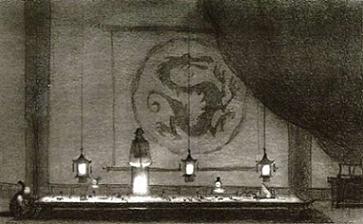
AV: As far as the music is concerned, before ending up with Jerry Goldsmith, you first turned to Rachel Portman?
TB: Well, you know, we listened to a lot of different composers. At one time, we really considered Danny Elfman because we were many fans of his work. We listened to Thomas Newman. And then we listened to something from Rachel Portman. I’m not even sure what movie it was to tell you the truth, and found she had a really good emotion side, but that she could also do a good action and add some energy to the score. So, we thought that she would be a great choice. We talked to her about it and accepted. She actually started working on it for a short time. But then she got pregnant and she decided she couldn’t do because she wanted to enjoy being pregnant and not being stressed. And the baby would have come while we would have been on the soundstage, on recording, and that would have been the worst timing possible. So, she stepped down and I think it was a good choice. And we were fortunate that Jerry Goldsmith became available. We had talked about him also, but he didn’t seem like it was gonna be a potential because of his schedule. Then, I think, one of his movies dropped down, something he was working on, so we jumped at it!
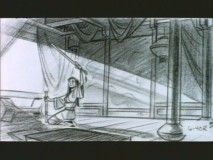
AV: How did you work with Jerry Goldsmith?
TB: We would break the film up into sequences. Maybe 15 or 20 different sequences and we would review those with Jerry. We would look the sequence and then we would talk about just the emotions that we wanted to see in the score. We talked about themes for Mulan or for Shan-Yu, the villain, some adventurous theme for the army and that sort of things. We wanted to get that feeling of Good and Evil and definitely play on Mulan’s theme whenever possible. So, we watched the movie together and then we talked about using those themes and versions of those themes. Happy version for a certain sequence or sad version for another. And that’s what he did first. He said: “Well, the first thing I need to do is to create that theme for Mulan.” So, he did that and then he created a villain theme. Those were the first things he sent to us, little sound files, and we talked about those on the phone and he changed them a little bit based on our notes and then he started composing the sequences. That was easy to work with him on that project.

The biggest trouble that we had; when Barry and I, the directors, and Jerry didn’t see eye-to-eye totally was a sequence where Mulan cuts her hair to make the choice to take her father’s place. It’s a key moment and when we storyboarded it, we had always played it with music from another movie. We wanted it to be a musical moment, with a kind of a pop-rock kind of energy to it so that it really moved the sequence along because it had a lot of drums to it. It was still score, it didn’t have vocals, but there was a very driving percussive beat to it. When we showed it to Jerry Goldsmith, he didn’t quite get it, he didn’t quite understand what we were trying to do with it. His first approach at it, musically, when he showed it to us, was like he scored on different beats to it.
We explained that we wanted one kind of musical song that plays over the whole sequence, from the moment that she’s sitting out in the rain and she sees her father and mother, then it starts. And then she walks into the temple and she blows up the candles and she grabs the conscription from her father, she leaves the house, she goes up on the horse up to the grandmother wakes up. It was all one song. But he saw that with several different beats. So, he disagreed, creatively, with our choice on that. So, we had to make him change it and that was difficult because, I mean, he’s Jerry Goldsmith, and I was a first-time director! I remember going to his house with co-director Barry Cook. We would sit in there, in his studio with him playing music for us and here we were these little kids, really, to him! It was kind of comical when I look back at it, now! But I was happy with what he finally came up with for that. I think he finally understood, towards the end of the production, what we were going for on that, and he gave us something great!
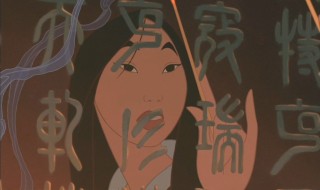
AV: And how did you come to involve David Zippel and Matthew Wilder on the songs?
TB: Disney was trying to find different songwriters that would be a good team and that would give kind of different sound to each of the songs. They found these two guys and kind of put them together. David Zippel came from Broadway, and the Studio liked his work on Hercules. I’m not quite sure how they found Matthew Wilder. He had done a lot of pop-rock stuff. He had a career as a pop musician in the early 90s and then he got into producing bands and wrote some of his own music. I think he approached Disney and had wanted to do something with them once he saw Lion King. They had two different sensibilities, the two of them but I think the blend worked well together, especially on the Be A Man.
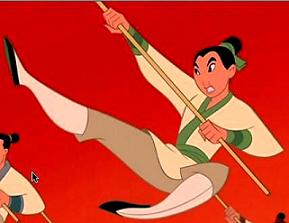
AV: Were there some songs that were deleted from the final film?
TB: Yes. We had developed and created a song for Mushu. He was gonna have his own song at one point. We wrote two or three different versions of that song. We even storyboarded one version of it. But every time we put it in the movie, it just didn’t feel right. I thing it destroyed the pacing to a certain degree. It just felt wrong. Ultimately, we just took the song out and we wrote a scene with a dialog based on what the song was gonna be about. It was shorter and got the point just as well and funnier in the end. So, there was a Mushu song that was supposed to be in there and we used to have Mulan’s Reflection song that was almost twice as long. We had another verse and chorus for that song, but we cut it because it was just stopping the movie. It was a pacing problem. So, we decided to shorten it. We get the emotion from it, we get the feeling of it, but we don’t have a full version of it.
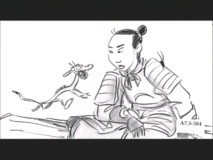
AV: How did you come to the idea of an Afro-American actor to play the role of a Chinese dragon – which proved to be a great idea?
TB: From the beginning we thought that, because Mushu is a mythological character, a magical character that doesn’t exist, we could have fun with it. We wanted a character that was totally the opposite of Mulan. She represented Chinese values, she was more dramatic, she was close to her father, very respectful. So, she had to be cast so that she had that voice, that very Chinese character. So, Ming-Na Wen was perfect for that. And we wanted the character of Mushu to be the opposite of Mulan. He’s kind of her guide to this whole new world she’s getting into. So, we thought: what would be more in contrast with an Asian character than an African-American character. It just seemed to work well that way. First, we were looking at Billy Crystal, Danny DeVito, kind of this New York, tough guy, streetwise kind of character, but it didn’t feel right for who Mushu was. It felt too much like what they had done with Hercules and some of the other films. Even Timon in The Lion King. So, we wanted to make him unique. So, let’s try African-American and we started casting a lot of different African-American personalities and we came across Eddie Murphy.
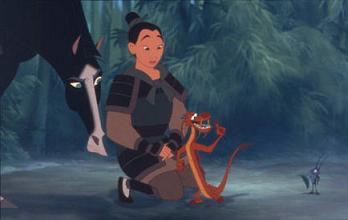
AV: Hence this amazing sequence when Mushu is introducing himself just like an Afro-American preacher!
TB: That was actually where Mushu’s song was gonna be! But when we took the song out, we thought we needed to have a big appearance, where he makes himself larger than he really is. So, we thought of the Chernabog sequence where there is this big devil that is larger-than-life. Maybe if Mushu would cast a shadow to make himself larger than he is but then would come out and we see this little guy, that would be funny! He really makes up who he is because when Mushu talks, he talks as he’s a lot bigger than he is! But when you see what he is, it’s just this little guy with a big mouth! That was a fun sequence. We enjoyed doing that!
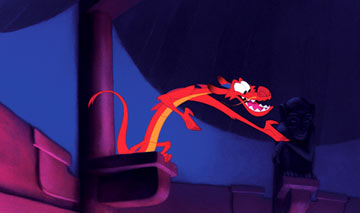
AV: Then, you came back to animation supervisor on The Emperor’s New Groove‘s Kronk.
TB: After Mulan was finished, I really was eager to animate. As a director, I barely animated. I did four scenes in Mulan but I certainly wanted to animate somewhere after directing. So, I went back in animation to Emperor’s New Groove because the film looked funny, exciting and different, almost like a Warner Bros. short, more than a Disney feature. It had that kind of timing and comedy sense.
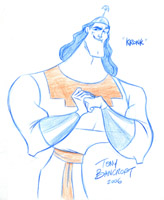 So, I wanted to be a part of that. And, to me, the best character of the film was Kronk. At the time we were starting to work, he was kind of a smaller character. He didn’t have a lot of lines and kind of a smaller part in the movie. This is the kind of characters that I love to do, a scene stealer: a comic character that maybe doesn’t have the main interest but gets all the laughs. When I heard his voice, done by Patrick Warburton, I said that was just perfect. That was one of the best voices I’ve ever worked with on a character. I really enjoyed doing it. It was the first time I actually animated a human character, too. Up to this point, I did a warthog and a clock and a bird and a lizard. So, that was a challenge. And I really enjoyed it!
So, I wanted to be a part of that. And, to me, the best character of the film was Kronk. At the time we were starting to work, he was kind of a smaller character. He didn’t have a lot of lines and kind of a smaller part in the movie. This is the kind of characters that I love to do, a scene stealer: a comic character that maybe doesn’t have the main interest but gets all the laughs. When I heard his voice, done by Patrick Warburton, I said that was just perfect. That was one of the best voices I’ve ever worked with on a character. I really enjoyed doing it. It was the first time I actually animated a human character, too. Up to this point, I did a warthog and a clock and a bird and a lizard. So, that was a challenge. And I really enjoyed it!
AV: No surprise, then, that the sequel of Emperor’s New Groove was devoted to Kronk!
TB: Yes. Because he was such a big scene stealer in the first movie! I loved that they were doing that. I had no involvement in that, unfortunately. I would have liked to have some involvement, but DisneyToon Studios do all their projects like that by themselves. But I’m happy to see that he’s got his own movie, this time!
AV: Then, you took part in the One By One short, first intended to be part of the sequel to Fantasia 2000.
TB: After I did Emperor’s New Groove, they didn’t have another feature to go one, but they had some shorts that they were developing. They were thinking about doing a sequel to Fantasia and Fantasia 2000. I loved this idea that the music drove the visuals and the story. Pixote Hunt was the director and art director on One By One. I had never worked with him before so, I really wanted to see what that was like. So, they made me the animator supervisor. I helped oversee with the director all the animators to make sure the animation was consistent, and got to animate some scenes in it, too. That was my last project at Disney, as I was talking with them about my wanting to leave and start my own company. No hard feelings. And said: “Ok. Do what you need to do!”

AV: And so, you founded Toonacious!
TB: Yes, I started Toonacious with two other partners, both of these partners I had met through the church that I go to. I had always thought about doing something more and start my own company, every since I was in College, back at Cal Arts, that was a dream of mine. I thought that I would do it with my twin brother Tom (the one you see in the footage present in the Disney’s Art of Animation attraction at Disney California Adventure and Disneyland Resort Paris), but he was already in Florida, then he moved to Nashville. So, he was pretty far apart and I felt that wouldn’t be possible. Then, I met these two partners at church and we became really good friends.
Disney, at the time, was going into a different direction and didn’t have quite as much moral values in the films they were doing. So, I started Toonacious and we created a series called Lenny & Sid that did pretty well. Then, we decided we wanted to do more. So, since I already had a relation with Disney, I went back to them telling them I had a studio and maybe they would have some projects for me to work on and developed. So, we developed and worked on The Tinkerbell Movie, and did several commercials with the Disney characters. They’ve been very generous in giving us different projects to work on, which was a lot of fun! When we began on Tinkerbell, it was going to be a 2D feature and then they decided to make it 3D. They have a team of their own working on it now.
AV: You created the Origin of Stitch short, presented in the Lilo & Stitch 2 DVD. How did that happen?
TB: When they started working on Lilo & Stitch 2, the Marketing team said: “Let’s have a short that we’d put on here!” And when they started to think about what that could be, there was a sequence from Lilo & Stitch where they show how Stitch was made up, like a Frankenstein story. They cut that sequence out of the movie, for whatever reason, but the director really wanted to see something like that. So, the director of the movie suggested that, as a short, would be a possibility.
The Marketing team was looking for something that would bridge the gap between the TV series, which is very different because it’s all about Stitch having cousins all of these experiments, and in the moment, he was just trying to overcome who he was as a monster. In the film, he was more like a little boy just wanting to have a home, a family, Ohana and all that. So, they thought a short could help bridge the two things. The Origin of Stitch was something like that. They had a script already but we worked on it a little bit, we created the storyboards for it and did all the animation, the backgrounds, all the way through to final color. I even directed all the voice actors, too. Chris Sanders for Stitch and David Odgen Stiers for Jumbaa, they both came back to do that. It was a lot of fun.
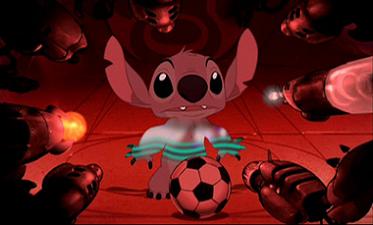
AV: So, you brought Alex Kuperschmidt (Stitch’s supervising animator) to Toonacious?
TB: He actually was still working at Disney. He helped out a little bit and did a couple of scenes in there. He’s a good friend of mine from Mulan. So, I kind of favor of him and he was kind enough to accept. He really enjoyed it, too because there was no 2D animation at Disney anymore at that Disney. He’d been doing CG animation for a while, so he enjoyed coming back to 2D, especially with a character that he knew and helped create!
AV: The short seems to be based on the contrast between the monstrous aspect of Stitch and at the time his very lonely and little-guy character.
TB: We wanted to play on the feelings of Stitch and his fear of what he’s supposed to be, that Frankenstein monster, and on his particular relationship with Jumbaa. He’s the creator of Stitch and we tried to show kind of a father-and-son relationship at the end when they come together and they huge. It’s like a little boy huging his father. And I think our composer, Christopher Tin, did a great job musically to really push these emotions in the story.
AV: You seem to be a very musical animator.
TB: I’m inspired by music. A lot of the projects that I worked on, like One By One which was all driven by music, or Mulan or the Stitch short that we did: all the projects that I’ve been involved with, I think of music, even when we don’t have any music, I still think of music in the back of my mind. Because music is all about timing and rhythm and movement and highs and lows. It really evoke emotions for the audience. That’s what good animation is, too. Good animation is like music. It has good timing, highs and lows, tempo, strong beats and soft beats, everything choreographed together to have a good scene. So, music really helps me have better animation.
Our sincerest thanks to Tony Bancroft for taking the time to participate in this interview.




